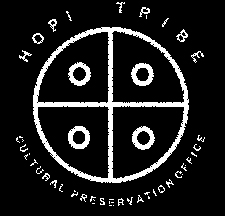



Hopi Study Hazardous Museum Chemicals
Kykotsmovi, Arizona-- Repatriation of American Indian material that has been subjected to standard museum conservation practices has introduced new challenges. Frequently, toxic chemical have been applied by conservators or collectors to guard material from insects and deterioration. In these cases, repatriated ceremonial material cannot be safely handled without gloves and other protective measures. American Indian have already been presented with this situation in material returned from some museums under the Native American Graves Protection and Repatriation Act (1990).
Much that is repatriated to American Indian groups is not destined for recurring ceremonial use. But a significant number of returns involve sacred objects meant to be handled or worn in ceremony. In those cases, the presence of toxic chemicals can be dangerous.
The Hopi Cultural Preservation Office has undertaken systematic documentation of the history of conservation methods and the chemicals used by conservators. Their work is directed toward the identification and removal or neutralization where possible of chemicals present on repatriated material. Until it is possible to remove or neutralize these poisons, adequate protection from them will be necessary for anyone who comes into contact with treated objects.
This year, the Hopi Tribe received a National Park Service grant to study the possibility of neutralizing poisons used on Hopi sacred objects, a project called "Hopi Kachina Friends Pesticide Documentary Project." The Hopi are also cooperating in studies with the School of American Research, the Arizona Poison Control Center and the Arizona State Museum. Their work will be important for many indigenous groups worldwide who are now accepting ceremonial material that have been chemically treated.
In June, Mr. Leigh J. Kuwanwisiwma, Director of the Cultural Preservation Office, presented a paper on this subject at the Annual Meeting of the Society for the Preservation Of Natural History Collections at the Smithsonian Institution in Washington, D.C. If you would like more information, please contact Lee Wayne Lomayestewa, Repatriation Coordinator, Cultural Preservation Office.